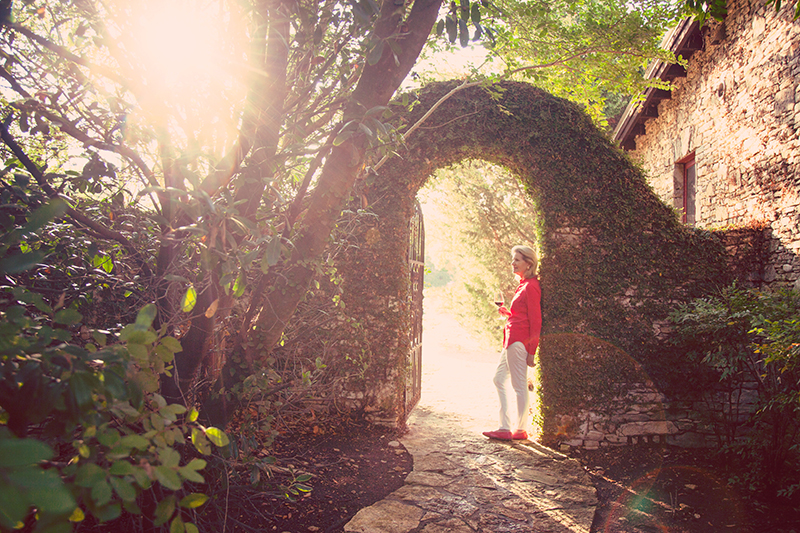Lone Star State loves sippin’. Texans love their wine and buy a lot of it. And Texas Hill Country wine region is now second only to Napa Valley for wine tourism. The economic impact of wine in Texas is so good that experienced winemakers and established wineries are moving in with the prospect of sharing in the good expansion.
Our state boasts over 500 individual wine brands and 9,300 acres of vineyards today, but wine isn’t new here. Texas has a long history of growing grapes to make wine. Evidence shows Spanish missionaries planted the first vineyard in North America along the Rio Grande River near present-day El Paso in 1682. In the 1880s, vineyards across France were infested by a devastating bug called Phylloxera, rapidly spreading worldwide. Thomas Volney Munson, a horticulturist in Denison, discovered a particular grapevine root resistant to the catastrophic bug. He effectively saved the wine industry in Europe. Italian immigrants settled near Del Rio in the same decade, where Frank Qualia established the Val Verde Winery in 1883. The family-owned winery still exists today. And these are just a few examples of wine throughout the history of Texas.
Fast forward to Prohibition from 1919 to 1932, when wine as an industry was at a standstill in Texas and the entire country. Afterward, in 1966, Texas Tech University professor Clinton “Doc” McPherson planted an experimental vineyard near Lubbock with 140 different grape varieties to research what would grow best in the soils and climate. A winemaking resurgence began in the 1970s with significant momentum in the past decade. WineAmerica.org reports the economic impact of the wine industry in Texas increased by 55% in just five years, bringing the value in 2022 to a resounding $20.35 billion.
With this kind of growth, the industry is undoubtedly attracting attention. Let’s explore just what it is about Texas.
Fall Creek Vineyards
fcv.com
It’s not unusual for a winemaker to travel the world to gain winemaking experience and to impact different regions. When the wine industry was flourishing in Chile in the late 1990s and early 2000s, winemaker Sergio Cuadra was making strides. After 30 years of experience in his native country, he was intrigued by helping a newer region thrive in the same type of expansion. He moved his family to the Texas Hill Country in 2010 to become the head winemaker at Fall Creek Vineyards (fcv.com) in the tiny town of Tow.
Founders Susan and Ed Auler planted their first grapes in 1975, and Sergio is still creating fantastic wines at Fall Creek today. Susan embraces newcomers to the Texas wine industry. “There is so much to learn from the traditions and experiments of other wine regions. Collaboration will help propel our homegrown Texas wines onto the world stage of recognition all the sooner,” Susan says.
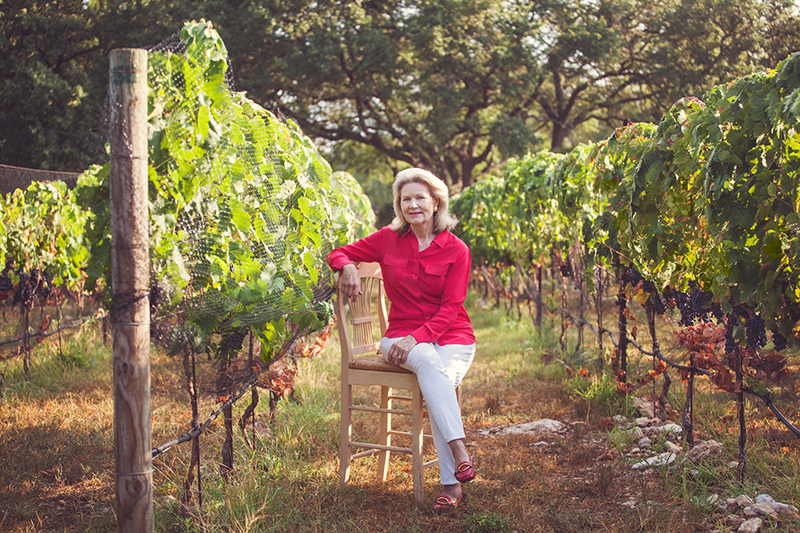
Bluemont Vineyards
bluemontvineyard.com
Bluemont Vineyard sits on a hill in Loudoun County, Virginia, just an hour from our nation’s capital. The Zurschmeides founded the farm over 40 years ago, adding a winery tasting room in 2007. Today the founding parents are beginning to hand the reins to the next generation. With family already living in Texas, expansion to our state allows their brand to grow for future generations and the pleasure of more time with relatives in the area. Hailey Zurschmeide is part of the new generation ready to take the lead. “There’s intrigue in a new region that values creativity and innovation in wine. Here we can experiment with different grapes and continue our farming practices in the Hill Country — including peaches and grapes — while embracing our farm-to-table tasting experience,” Zurschmeide says.
Because some of the existing winery team and family would be relocating to the Lone Star State, finding a feeling of acceptance was essential. The welcoming community in Fredericksburg felt perfect. While building the brand in Texas, Bluemont continues to operate the Virginia farm, winery, cidery, brewery, and wedding venue. In the remodeled tasting room on Highway 290, guests can enjoy a flight of five Texas wines with the option for a food pairing experience, barbeque, beer, or cider. The operation provides a little something for everyone.
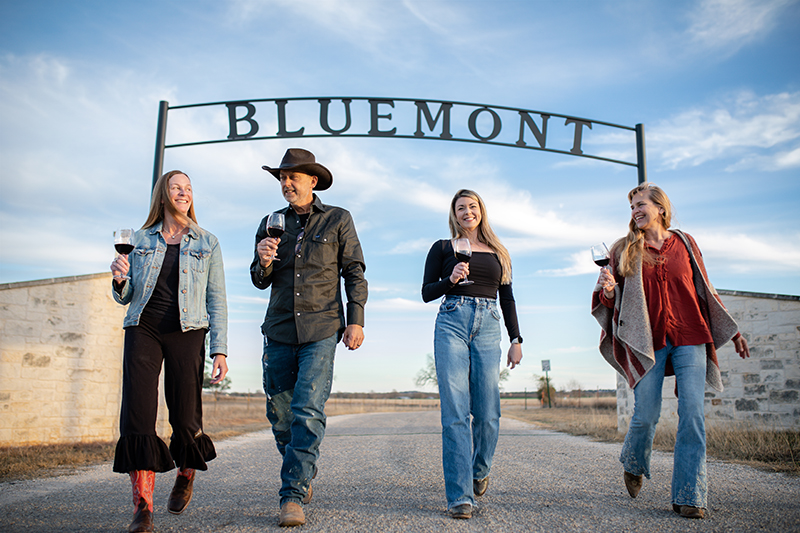
Serrano Wines
(serranowine.com)
Expanding an existing wine brand can be costly when considering real estate, tax structures, and construction expenses in any established, well-recognized wine region. Serrano Wines (serranowine.com) began when the energetic couple, Sarah and Brice Garrett, decided to take a different route after finishing college in Tennessee and moved to California. In 2015, the couple quickly gained skills by working in a large cellar in Paso Robles, where they helped make many different wine labels. At just 22, the two were already looking to the future and immediately started their own small brand.
Many aspects of the two regions are similar, from the climate and soils to the pioneering spirit of the winemakers and grape growers. “There are big differences,” Sarah says. “The region of Paso Robles can be hard to break into unless you have big money to back you to build something large so you get noticed. The winemaking community can feel cliquish and intimidating to young people like us who are self-funding our label. We rented space for a tasting room downtown and made our wine in a winery alongside several other brands.” Her husband Brice agreed. “We couldn’t see a way to ownership any time soon, so we needed to look outside of California if we wanted to grow our brand,” he admitted. “When we started to research other regions to grow into, the welcoming nature of Texans immediately drew us in.”
Before they even found a property, the couple purchased Texas grape juice and shipped it to the facility in California so they could understand Texas wines hands-on. Soon, the couple purchased ten acres in Hye and moved their dogs and existing wine inventory. The small but swanky tasting room offers an intimate experience with existing Serrano inventory from Paso Robles, plus four wines made from 100% Texas grapes — and more to come.
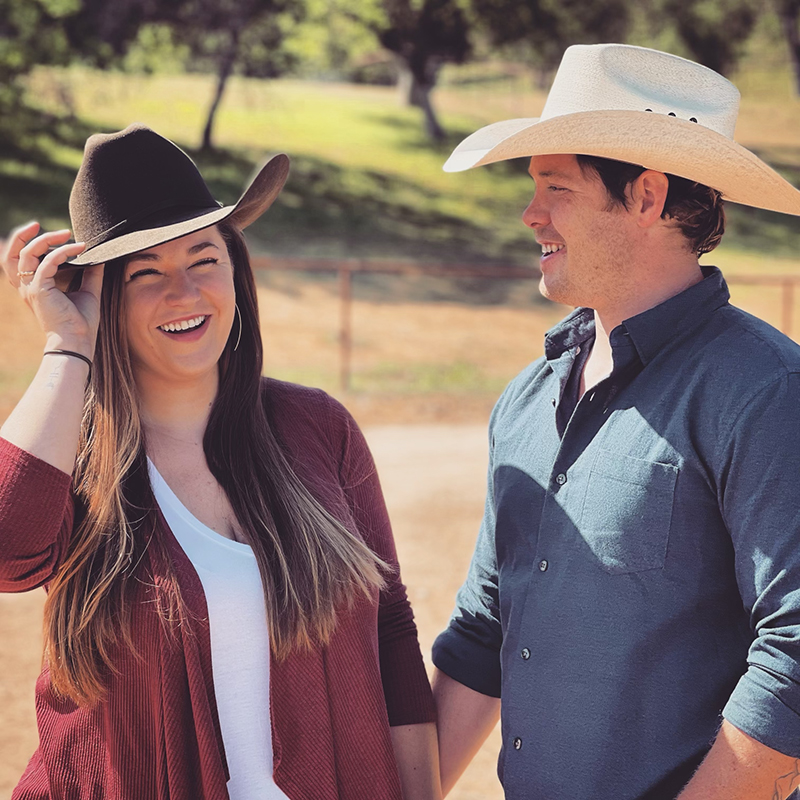
Missick Cellars
(missickcellars.com)
Growing up in California, Chris Missick enjoyed wine early on, but he truly caught the wine bug during his military service and law school. In 2011, he and his wife, Laura, jumped on the opportunity to purchase the existing Bellangelo winery and brand in the New York Finger Lakes. After receiving a nod from Wine & Spirits Magazine in 2018 for producing one of the Top 100 Wines in the World, they rebranded as Missick Cellars in 2020. They were thrilled to be a part of an area gaining recognition in the wine world, and Chris published a book about the wine region titled A Sense of Place.
Even with a solid presence in the Finger Lakes, a series of unfortunate events led the couple to rethink their plans for the years to come. A fire decimated the newly built sparkling wine production building. Shortly after, Chris discovered an employee had embezzled more than $300,000. To top it all off, Chris sustained a serious injury while working in the winery. Maybe it was time for a change.
After watching the docuseries “Texas Winemakers” on YouTube, Missick ventured to Texas in early 2022 to glean some ideas for moving forward positively. “The Finger Lakes region is six hours from bustling Manhattan, yet there remains a challenge in converting New Yorkers to Finger Lakes wine drinkers,” Chris says. “We are creating world-class wines, winning awards, yet we struggle to sell the wines at a price that allows growth. But Texas has a pride of place, and Texans embrace everything Texas, which is good for the wine industry.”
Soon the couple purchased ten acres in Boerne. The family — and wine-making equipment — moved as Chris prepared to create Texas wines in the 2023 vintage. Missick will utilize the production facility at Bending Branch Winery in Comfort, where he will also serve as a consulting winemaker to help make the white and rosé wines for the brands Bending Branch produces. In addition to making Texas wine, Missick plans to offer mobile bottling services and a facility with special equipment to make sparkling wines using the traditional methods of Champagne. Providing needed services to local wineries is one way a relocated out-of-state winery like Missick Cellars can positively impact our industry.
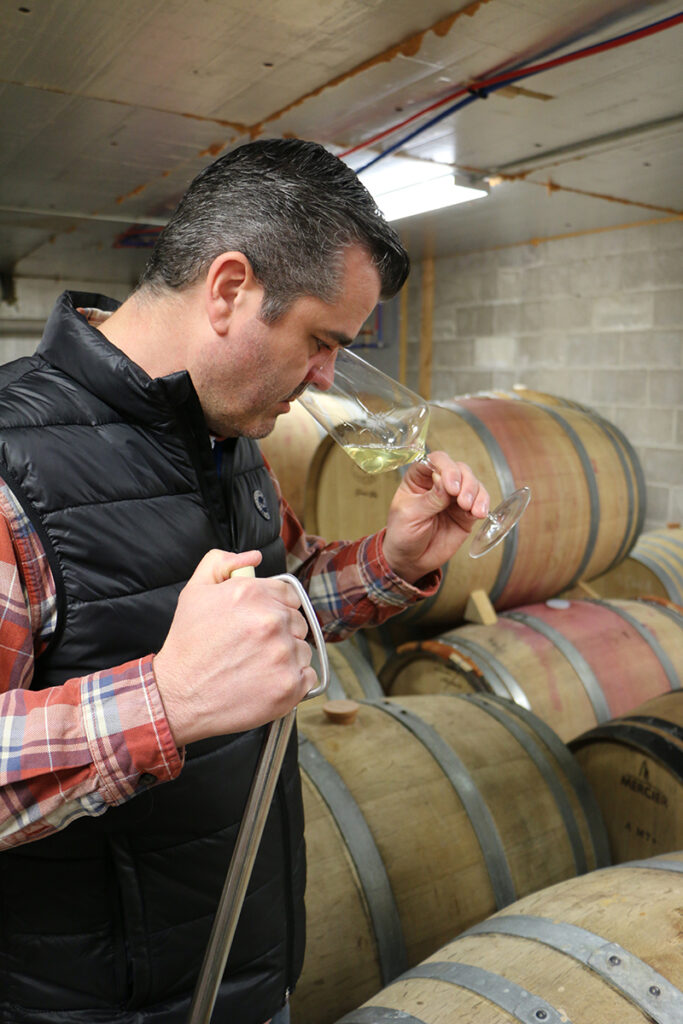
The best reasons for moving to Texas may be our sense of community, adventurous spirit, and good old-fashioned friendliness. “Friendship” is our official state motto, after all. The roots of this go back to before we were a state. Legend says that the word Texas comes from the Caddo word for friends. The Caddo were a confederacy of Native American tribes in East Texas. The Spanish set up a mission in the 17th century led by Friar Damian Massanet. During one of his early encounters with the Caddo, they called him taysha, a word for friend or ally. Massanet wrote the word as Tejas in his correspondence, referring to both the native people and the place. Eventually, the Spanish changed the letter j to x in certain words, and Tejas became Texas — referring to the area and the friendly nature of the people here.
It’s not just that Texans buy a lot of wine. Selling wine is essential to a winery but experienced winemakers and established wine brands are moving into Texas for reasons that may be surprising. The biggest attractions may be family ties, a sense of community, flexibility for further growth, and plain old friendliness. Still, the welcoming people and the Texas spirit create the biggest draw for wineries. And we can all drink to that!


